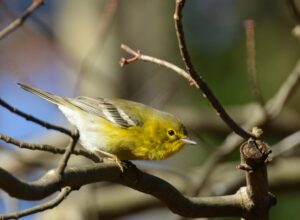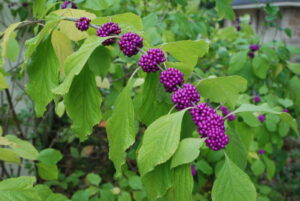How to Make Wildlife-Friendly Landscapes
go.ncsu.edu/readext?811950
en Español / em Português
El inglés es el idioma de control de esta página. En la medida en que haya algún conflicto entre la traducción al inglés y la traducción, el inglés prevalece.
Al hacer clic en el enlace de traducción se activa un servicio de traducción gratuito para convertir la página al español. Al igual que con cualquier traducción por Internet, la conversión no es sensible al contexto y puede que no traduzca el texto en su significado original. NC State Extension no garantiza la exactitud del texto traducido. Por favor, tenga en cuenta que algunas aplicaciones y/o servicios pueden no funcionar como se espera cuando se traducen.
Português
Inglês é o idioma de controle desta página. Na medida que haja algum conflito entre o texto original em Inglês e a tradução, o Inglês prevalece.
Ao clicar no link de tradução, um serviço gratuito de tradução será ativado para converter a página para o Português. Como em qualquer tradução pela internet, a conversão não é sensivel ao contexto e pode não ocorrer a tradução para o significado orginal. O serviço de Extensão da Carolina do Norte (NC State Extension) não garante a exatidão do texto traduzido. Por favor, observe que algumas funções ou serviços podem não funcionar como esperado após a tradução.
English
English is the controlling language of this page. To the extent there is any conflict between the English text and the translation, English controls.
Clicking on the translation link activates a free translation service to convert the page to Spanish. As with any Internet translation, the conversion is not context-sensitive and may not translate the text to its original meaning. NC State Extension does not guarantee the accuracy of the translated text. Please note that some applications and/or services may not function as expected when translated.
Collapse ▲With a little planning and careful selection of plants, anyone can have a native plant landscape that works in harmony with the environment, provides a haven for native wildlife, and is attractive in the most urban of settings. Going Native can be done in small steps; you don’t have to replant your entire yard all at once. Instead, you can start small by replacing a non-native invasive tree with a native one, by making a small area of your yard into a native plant garden, or by replacing a section of turf with a bed of native plants. Any piece of your property that you maintain in native vegetation or convert back to native plants can help offset the habitat losses from development and the spread of invasive plants.
Getting Started
Planning is important when creating a native plant landscape with wildlife in mind. By following the steps listed below, you will find that you can design an attractive, native plant landscape that works well for you and for wildlife.

Step One – Identify Wildlife Needs – All wildlife have basic requirements for food, water, and cover. If you want to attract a diversity of birds or butterflies to your property, you’ll need to understand their basic needs for food, water, and cover.
Step Two – Map Existing Site and Vegetation – Before you start planting, you need to determine what plants you already have. Are they native or not? Should you keep them or replace them?

Step Three – Design a Native Plant Landscape – The design process takes into account the needs of wildlife and your needs as a landowner. Meeting wildlife needs can require specific plant diversity, careful arrangement of plant types, and the addition of feeders, nest boxes, and water features.
Step Four – Implement a Native Plant Landscape – Once you’ve made your plan and selected the native plants you want to use, you’ll need to find and buy plants and make sure they’re planted correctly.
Much of the information from this website is available in hard copy in the publications entitled Managing Backyards and Other Urban Habitats for Birds, Butterflies in Your Backyard, and Landscaping for Wildlife with Native Plants, and Reptiles and Amphibians in Your Backyard.


